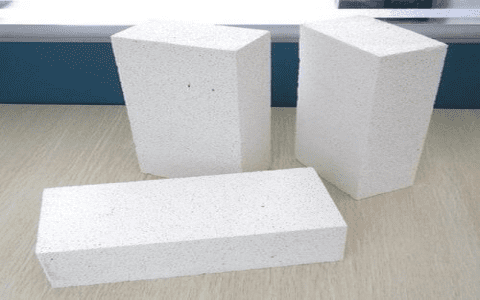Well now, let me tell you a thing or two about these refractory bricks. These are them special bricks they use for furnaces, kilns, and other places where it gets real hot. We call ’em fire bricks, and they ain’t like your regular bricks, no sir! These ones gotta handle a whole lotta heat without crackin’ or breakin’.
Now, these here fire bricks are made of tough materials, and they’re good for all sorts of high-temperature jobs. You’ll find ’em in places like big ol’ furnaces, where they burn things up real good. They help keep the heat where it’s supposed to be, so the furnace can do its job properly. Without them, the heat’d just go everywhere and make a big mess!


One kind of fire brick they use is called bauxite bricks. They made from bauxite, which is a kinda rock that’s high in aluminum oxide. They’re real strong and can handle high temps, but they don’t last quite as long as the others. Still, they get the job done when you need them, and that’s what counts!
Then, you got your magnesite bricks. These ones are made from magnesite, a kind of rock rich in magnesium. Now, these are perfect for lining furnaces, especially ones that need to get really, really hot. They got iron oxide in ’em, which makes them sturdy and heat-resistant. They can take the heat from 1400 to 1600 degrees, no sweat. These are the bricks you’d want in a furnace that gets a lot of use.
Don’t forget about dolomite bricks, neither. These ones got a good mix of magnesium and calcium, and they’re tough as nails. They can handle just about any temperature and won’t crack easy. They’re just as good for lining a furnace, so if you need something that’ll last a long time under intense heat, dolomite bricks might be the way to go.
Refractory bricks ain’t all made the same, though. Some of ‘em are better for certain jobs than others. Like I said, magnesite bricks are best for those high-heat jobs, and dolomite ones are great if you need ‘em to hold up for the long haul. But all of ‘em are built to handle them extreme temperatures that would break a regular brick in no time.
These bricks get used in all sorts of places where heat’s important. I mean, think about it – you need ‘em for everything from big industrial furnaces to smaller kilns used in pottery or brickmaking. If you don’t have good refractory bricks, you might as well forget about getting your furnace to work right. They help keep the heat inside and stop everything from falling apart.
It’s mighty important to pick the right kind of fire brick for the job. If you’re working with a furnace that gets real hot and runs constantly, you need the right mix of materials. And if you don’t pick the right one, well, it ain’t gonna last long. The temperature inside the furnace can get so high, it’d melt a regular brick in no time. But these here special fire bricks, they’re built for that heat, so they won’t break down on you too soon.
Let me tell ya, when it comes to building a furnace, or keeping one runnin’ smooth, them refractory bricks are a real lifesaver. They make sure everything stays safe, and they help keep your furnace from falling apart in the middle of a job. Without ’em, you’d just be throwin’ money down the drain. So if you’re ever in the business of building a furnace, or just need to fix one up, make sure you get the right kind of fire bricks. It’s a small thing, but it makes a big difference in the long run.
So, that’s about all there is to it. Refractory bricks, fire bricks, or whatever you wanna call ’em – they’re built tough and made to handle the heat. Whether it’s magnesite, dolomite, or bauxite bricks, they all serve a good purpose in keeping furnaces working right and safe. You just gotta know which one’s best for the job, and you’ll be all set!


Tags:[refractory bricks, fire bricks, magnesite bricks, dolomite bricks, furnace lining, high temperature bricks, fireclay brick, industrial furnaces, ceramic materials, heat resistant bricks]



